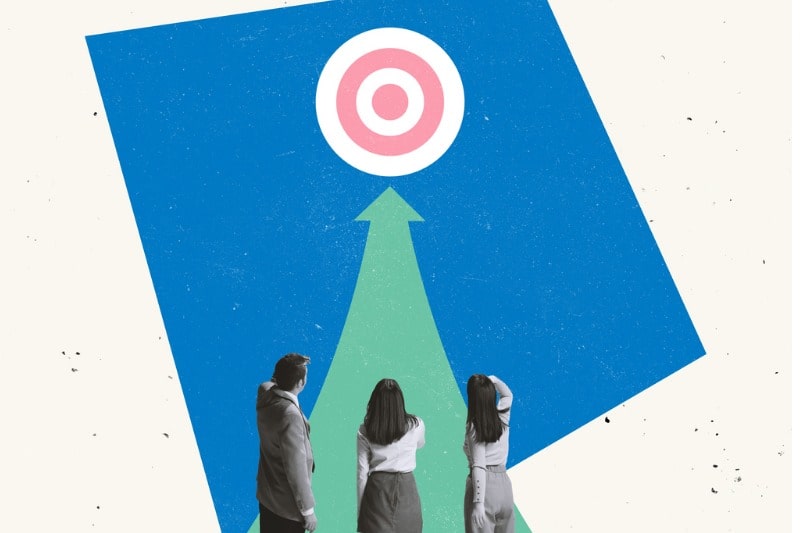
The term Neurodiversity has gained significant attention in recent years. It describes the differences in the human brain, acknowledging that each processes information uniquely. Victoria Hill, Senior Director of Diversity and Social Impact at Advanced Group, addressed the importance of understanding and respecting neurodiverse differences in the workplace in our latest RPO Leadership Forum, hosted by RPOA CEO Lamees Abourahma. Advanced Group is the parent company of Advanced RPO, a gold member of the RPO Association, and an RPO services provider.
During her presentation, Hill explored the effect of Neurodiversity on hiring decisions, discussed the need to embrace Neurodiversity in the workplace, and addressed the importance of understanding triggers and making accommodations. Below is a recap of her presentation.
What is Neurodiversity?
Hill shared that most people have probably heard the term "neurodiversity" over the last few years, but social scientist Judy Singer first coined it in 1998.
Hill defined neurodiversity as the differences in the brain. She explained that breaking down the components of "neural" and "diversity" makes it clear that Neurodiversity pertains to various human differences related to the nervous system and the brain. In other words, Neurodiversity infers that every employee, every person, and every human being interprets the world uniquely.
She next shared terms related to neurodiversity, such as neuro minority, neurotypical, and neurodivergent. She explained that neurodivergent refers to someone who thinks differently from the majority. She pointed out that people use the term neurodivergent to describe people with autism, ADHD, dyslexia, and dyspraxia.
She said neurotypical describes someone whose brain behaves in the same way as the majority of society. Hill expressed her reservations about the term "neurotypical" and argued that a standard brain or a universally understood concept of normal doesn't exist. She also mentioned that many cultural factors can influence perceptions and behaviors.
She lastly defined "neurominority" as any group that differs from the majority regarding behavioral traits and brain function.
She next discussed the importance of understanding and respecting neurodiverse differences in the workplace.
Why Is it Important To Understand And Respect Neurodiverse Differences In The Workplace?
Neurodiversity encompasses a vast spectrum of differences in the human brain, and Hill noted that a standard brain doesn't exist. Everyone learns and processes information uniquely, with varying attention spans and behaviors. She observed that embracing these differences is as normal as celebrating the diversity in our physical appearances. Recognizing and valuing Neurodiversity helps people identify the vast benefits that our diverse brains bring to the table.
Watch the Neurodiversity webinar to improve team relationships.
The Effect of Neurodiversity on Hiring Decisions
How does neurodiversity affect hiring decisions? Hill introduced a fictional candidate named John to the audience. John has impressive qualifications in data analytics. He holds two master's degrees with honors, has excellent references, and is highly skilled. She pointed out that he exhibits unusual behaviors, such as frequently wearing headphones and tightening his shoelaces.
Hill used this fictional candidate to illustrate that there's no standard brain. John's brain operates differently than others, but he gets the job done. And sometimes, she added, we may pass on somebody because we think they're different from what we see as “normal”. However, she pointed out, that if we step back and do an objective and discerned evaluation of a person’s behavior or fitness for a particular position, we can embrace neurodiversity in the workplace. She urged the audience to broaden their understanding of what they consider "normal" and avoid making assumptions about people with different perspectives and experiences. She highlighted the need for accurate understanding to dispel misconceptions about neurodiverse individuals.
Embracing Neurodiversity in the Workplace
Hill believes that an accurate understanding of neuro-divergent employees can help employers embrace neurodiversity in the workplace. She pointed out that neurodiversity encompasses a range of conditions, such as anxiety, depression, ADHD, dyslexia, autism, Down syndrome, bipolar disorder, and OCD. While these conditions affect thinking skills to varying degrees, employers need to recognize and respect these differences in our brains, just as we do with differences in physical traits, she said.
Understanding The Triggers
Hill noted that we all have different, beautiful minds. She emphasized that we have to get to the point where we're comfortable creating a safe space for people to talk about this topic. We also need to know what triggers people; an example she shared was how an employee could be triggered by seeing bubbles pop up in their messenger app like Teams or Slack, then disappear. That can be a trigger for some people them because they don't know what was being typed, why the person didn’t send the message, and they're wondering, Did I do something wrong? Is someone going to call a meeting? Their mind starts to recognize that trigger. If we understand what triggers people, and they share their experiences with us when they're comfortable, we should do our best to accommodate them.
5 Strategies to Accommodate Neurodiverse Employees
Hill introduced five key strategies to consider when accommodating neurodiverse employees:
- Provide a flexible and accommodating workplace
- Engage in empathetic conversations
- Use clear and structured communication technology
- Foster a supportive culture
- Practice specificity in goal-setting and support
She suggested that these strategies can help business leaders support the productivity and success of all employees, regardless of their neurodiverse backgrounds.
Recommended Webinar: Economic Uncertainty and its Effect on Hiring
Flexible and accommodating workplace
Hill suggested that leaders provide a flexible work environment. She noted that every industry, company, leader, and department is different; therefore, leaders should consider accommodations on a case-by-case basis. If providing accommodation doesn't cause undue hardship, it's worth considering to support an employee’s productivity. Accommodations could include offering quiet or sensory-friendly workspaces, she said.
Conversations and empathy
Hill said that empathetic conversations with employees and co-workers can help them meet expectations and succeed. For instance, in a customer-facing role, leaders need to figure out the best way to accommodate the person who needs help. Ask them how you can help them succeed and meet the expectations of the role. If accommodating them doesn't create hardships for your business, do so. However, if it does, talk about different roles they could work in. Leaders must show empathy and listen to fully understand the needs of employees.
Clear and structured communication technology
Hill highlighted that a range of technologies, including speech-to-text software, offer valuable support to those on the neurodiverse spectrum, and leaders can also make task and role adjustments. She emphasized that leaders must engage in meaningful conversations to identify the best adjustments to support individuals.
Supportive culture
Hill noted that leaders must prioritize communication, active listening, asking questions, and building genuine relationships to create a supportive work culture. She said people open up and share when we foster positive relationships. Conversely, individuals won't offer valuable insights if we make a distant or unwelcoming culture. Leaders should create an environment where individuals feel comfortable sharing beyond work-related topics. Each workplace and industry is unique. Therefore, leaders and co-workers should practice patience, avoid making assumptions, and make accommodations. She also highlighted the significance of educating others about the benefits of fostering a culture of empathy and inclusivity, especially for individuals with neurodiverse backgrounds. Additionally, use respectful language, provide clear instructions, address mistakes privately, and recognize and utilize individual strengths.
Specificity
Leaders need to practice specificity. Hill pointed out that specifics are essential when working with individuals with unique needs. Leaders should establish specific goals and targets in writing. This action could involve setting smaller targets over two weeks to help them stay on track. Leaders must identify the employee's inconsistency—is it meeting deadlines or something else? Once they pinpoint the issue, they can provide specific support, such as teaching employees how to manage their time better or sending them to relevant training. Setting goals and targets helps promote consistency. Leaders should involve the employee in the process because everyone's brain works differently, and they may have valuable input on how best to support them. Ultimately, the goal is to help the employees succeed and make them feel included in the process.
Conclusion
Understanding and embracing neurodiversity in the workplace can create a more inclusive and supportive environment for all employees. As Hill highlighted, the differences in the human brain encompass a broad spectrum of thinking and behavioral traits, and employers should recognize and respect these differences just as we do with physical characteristics. By acknowledging the effect of neurodiversity on hiring decisions, emphasizing the importance of allowing people to discuss triggers, and advocating for a broader understanding of "normal," we can cultivate a workplace environment that celebrates diversity in all its forms. Beyond the workplace, this approach fosters a society that values and respects every individual's unique perspectives and experiences, ultimately contributing to a more inclusive and empathetic world.
We encourage you to visit the RPO Academy to enhance your ability to identify and recruit diverse talent effectively.














